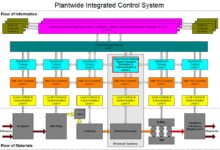System Architecture: 7 Powerful Insights You Must Know
Ever wondered how complex software systems stay organized, scalable, and efficient? The secret lies in system architecture—the blueprint that shapes how components interact, data flows, and services scale. In this deep dive, we’ll explore what makes system architecture the backbone of modern tech.
What Is System Architecture and Why It Matters

System architecture is the foundational framework that defines the structure, behavior, and interactions of a system’s components. It’s not just about drawing boxes and arrows—it’s about making strategic decisions that impact performance, scalability, security, and maintainability.
Defining System Architecture
At its core, system architecture is the high-level design of a system. It outlines the major components, their relationships, and the principles guiding their design and evolution. According to the ISO/IEC/IEEE 42010 standard, architecture is the fundamental concepts or properties of a system in its environment embodied in its elements, relationships, and in the principles of its design and evolution.
- It serves as a communication tool between stakeholders.
- It guides development, deployment, and maintenance.
- It enables risk assessment and trade-off analysis.
“Good architecture is not about complexity, but about clarity and intention.” — Grady Booch, IBM Fellow and Chief Scientist for Software Engineering
Key Components of System Architecture
A well-defined system architecture includes several critical elements:
- Components: The building blocks such as servers, databases, microservices, or APIs.
- Connectors: Communication channels like HTTP, message queues, or RPC.
- Interfaces: How components expose functionality (e.g., REST, GraphQL).
- Data Flow: How information moves through the system.
- Constraints: Technical, regulatory, or business limitations.
These components are often visualized using architectural diagrams, which help teams align on design decisions before writing a single line of code.
The Evolution of System Architecture Over Time
System architecture has evolved dramatically over the decades, shaped by advances in hardware, software, and user demands. From monolithic mainframes to cloud-native microservices, the journey reflects a continuous pursuit of efficiency, scalability, and resilience.
From Monolithic to Modular Design
In the early days of computing, systems were built as monoliths—single, tightly coupled applications where all functionality resided in one codebase. While simple to develop initially, monolithic architectures became difficult to scale and maintain as applications grew.
The shift toward modular design introduced the idea of separating concerns. This led to layered architectures (e.g., presentation, business logic, data access) and eventually component-based design, where parts of the system could be developed and deployed independently.
One of the key milestones was the introduction of Service-Oriented Architecture (SOA), which allowed different services to communicate over a network using standardized protocols. SOA laid the groundwork for today’s microservices.
The Rise of Distributed Systems
With the internet boom and the need for global scalability, distributed system architecture became essential. In a distributed system, components are located on different networked computers but appear as a single coherent system to users.
- Examples include cloud platforms like AWS, Google Cloud, and Azure.
- Distributed systems enable fault tolerance through redundancy.
- They introduce challenges like network latency, partial failures, and data consistency.
The CAP theorem—introduced by Eric Brewer—states that a distributed system can only guarantee two out of three properties: Consistency, Availability, and Partition Tolerance. This principle continues to influence architectural decisions today.
Types of System Architecture: A Comprehensive Overview
There is no one-size-fits-all approach to system architecture. Different types are suited to different use cases, performance requirements, and organizational goals. Understanding these types helps architects choose the right model for their needs.
Monolithic Architecture
Monolithic architecture is the traditional model where all components of an application are packaged together into a single executable unit. It’s often used in small to medium-sized applications where simplicity and fast development are priorities.
- Pros: Easy to develop, test, and deploy.
- Cons: Hard to scale, prone to tight coupling, difficult to adopt new technologies.
- Best for: MVPs, small teams, legacy systems.
Despite its limitations, monolithic architecture remains relevant. For example, many startups begin with a monolith and refactor later as they grow.
Microservices Architecture
Microservices architecture breaks down an application into small, independent services that communicate via APIs. Each service is responsible for a specific business function and can be developed, deployed, and scaled independently.
- Pros: High scalability, technology flexibility, fault isolation.
- Cons: Increased complexity in orchestration, monitoring, and data consistency.
- Best for: Large-scale applications, teams using DevOps, cloud-native environments.
Companies like Netflix, Amazon, and Uber have successfully adopted microservices to handle massive user loads. However, this architecture requires robust DevOps practices and infrastructure automation.
Event-Driven Architecture
In event-driven architecture (EDA), components communicate through events—notifications that something has happened. This model is highly asynchronous and decoupled, making it ideal for real-time processing and reactive systems.
- Components publish events to a message broker (e.g., Kafka, RabbitMQ).
- Other components subscribe to relevant events and react accordingly.
- Enables loose coupling and high responsiveness.
EDA is widely used in financial systems, IoT platforms, and real-time analytics. For example, a stock trading platform might use EDA to trigger alerts when prices cross certain thresholds.
Key Principles of Effective System Architecture
Building a robust system architecture isn’t just about choosing a model—it’s about adhering to sound engineering principles. These principles guide decision-making and help avoid common pitfalls.
Scalability and Performance
Scalability refers to a system’s ability to handle increased load by adding resources. There are two types:
- Vertical scaling: Adding more power (CPU, RAM) to a single machine.
- Horizontal scaling: Adding more machines to distribute the load.
Modern system architecture favors horizontal scaling, especially in cloud environments. Techniques like load balancing, caching (e.g., Redis), and database sharding help maintain performance under heavy traffic.
Architects must also consider latency, throughput, and resource utilization when designing for performance.
Reliability and Fault Tolerance
A reliable system continues to operate correctly even in the face of failures. Fault tolerance ensures that the system can recover gracefully from errors.
- Use redundancy: Deploy multiple instances across availability zones.
- Implement retry mechanisms and circuit breakers (e.g., Hystrix).
- Design for graceful degradation—allow partial functionality during outages.
Netflix’s Chaos Monkey tool randomly disables production instances to test resilience, exemplifying a proactive approach to reliability.
Security by Design
Security should be embedded in system architecture from the start, not added as an afterthought. This principle, known as “security by design,” involves:
- Implementing authentication and authorization (e.g., OAuth, JWT).
- Encrypting data in transit (TLS) and at rest.
- Applying the principle of least privilege.
- Conducting regular threat modeling and penetration testing.
The OWASP Top 10 provides a valuable checklist for identifying common security risks in web applications.
Tools and Frameworks for Designing System Architecture
Designing system architecture requires both conceptual thinking and practical tools. Modern architects use a variety of frameworks and software to visualize, simulate, and document their designs.
Architectural Modeling Tools
Visual modeling helps teams understand and communicate complex architectures. Popular tools include:
- Lucidchart: Collaborative diagramming tool with templates for UML, ERD, and cloud architecture.
- Draw.io (diagrams.net): Free, open-source tool for creating architecture diagrams.
- PlantUML: Text-based UML tool that generates diagrams from code-like syntax.
These tools support standards like UML (Unified Modeling Language) and C4 model, which provide structured ways to represent system architecture at different levels of abstraction.
Cloud Architecture Frameworks
Cloud providers offer comprehensive frameworks to guide architecture design:
- AWS Well-Architected Framework evaluates workloads across five pillars: operational excellence, security, reliability, performance efficiency, and cost optimization.
- Microsoft Azure Architecture Center provides guidance on designing secure, scalable cloud solutions.
- Google Cloud Architecture Framework emphasizes automation, observability, and sustainability.
These frameworks help organizations align their system architecture with best practices and industry standards.
The Role of System Architecture in DevOps and CI/CD
System architecture and DevOps are deeply intertwined. A well-designed architecture enables smooth integration, continuous delivery, and rapid deployment—core tenets of modern software development.
Enabling Continuous Integration and Deployment
CI/CD pipelines rely on a modular and loosely coupled system architecture. Microservices, for example, allow teams to deploy changes to one service without affecting others.
- Each service can have its own CI/CD pipeline.
- Automated testing and deployment reduce human error.
- Infrastructure as Code (IaC) tools like Terraform and Ansible ensure consistency across environments.
Without a proper architecture, CI/CD can become a bottleneck. For instance, a monolithic app with tangled dependencies may require full redeployment for minor changes, slowing down release cycles.
Infrastructure as Code and Automation
Modern system architecture embraces automation through Infrastructure as Code (IaC). Instead of manually configuring servers, architects define infrastructure using code, which can be version-controlled and reused.
- Terraform (by HashiCorp) supports multi-cloud provisioning.
- CloudFormation (AWS) allows declarative definition of AWS resources.
- Ansible and Puppet enable configuration management.
IaC improves reproducibility, reduces drift between environments, and accelerates onboarding of new developers.
Future Trends in System Architecture
As technology evolves, so does system architecture. Emerging trends are reshaping how we design, deploy, and manage systems. Staying ahead of these trends is crucial for building future-proof solutions.
Serverless and Function-as-a-Service (FaaS)
Serverless computing abstracts infrastructure management entirely. Developers write functions that run in response to events, without worrying about servers.
- Examples: AWS Lambda, Google Cloud Functions, Azure Functions.
- Benefits: Auto-scaling, pay-per-use pricing, reduced operational overhead.
- Challenges: Cold starts, limited execution time, debugging complexity.
Serverless is ideal for event-driven workflows, such as image processing, chatbots, or API backends. However, it’s not suitable for long-running or stateful processes.
Edge Computing and Decentralized Architectures
Edge computing brings computation closer to the data source—like IoT devices or mobile phones—reducing latency and bandwidth usage.
- Used in autonomous vehicles, smart cities, and real-time analytics.
- Complements cloud computing by offloading processing to edge nodes.
- Requires robust security and synchronization mechanisms.
Decentralized architectures, powered by blockchain and peer-to-peer networks, are also gaining traction in areas like identity management and supply chain tracking.
AI-Driven Architecture Design
Artificial intelligence is beginning to play a role in system architecture. AI-powered tools can analyze codebases, suggest optimizations, and even generate architectural diagrams.
- Tools like GitHub Copilot assist in code generation.
- ML models can predict performance bottlenecks or security vulnerabilities.
- AI can simulate system behavior under various load conditions.
While still in early stages, AI-assisted architecture design promises to reduce human error and accelerate decision-making.
What is system architecture?
System architecture is the conceptual structure and functional organization of a system. It defines the components, their relationships, and the principles guiding their design and evolution. It serves as a blueprint for building scalable, maintainable, and secure software systems.
What are the main types of system architecture?
The main types include monolithic, microservices, event-driven, service-oriented (SOA), and serverless architectures. Each has its own strengths and trade-offs, making them suitable for different use cases and organizational needs.
How does system architecture impact scalability?
A well-designed system architecture enables horizontal and vertical scaling. By decoupling components, using load balancers, and leveraging cloud-native technologies, architects can build systems that handle growing user demands efficiently.
Why is security important in system architecture?
Security must be integrated from the start to protect data, prevent breaches, and ensure compliance. A secure architecture includes authentication, encryption, access controls, and regular vulnerability assessments.
What tools are used in system architecture design?
Common tools include Lucidchart, Draw.io, PlantUML for diagramming; AWS Well-Architected, Azure Architecture Center for cloud guidance; and Terraform, Ansible for infrastructure automation.
System architecture is the invisible force that shapes how software systems behave, scale, and evolve. From monolithic roots to cloud-native futures, it has undergone a remarkable transformation. By understanding its principles, types, and tools, organizations can build resilient, efficient, and adaptable systems. As technologies like AI, edge computing, and serverless continue to rise, the role of system architecture will only grow in importance. The key is to design with intention, plan for change, and embrace innovation—because the best architectures aren’t just functional; they’re visionary.
Further Reading:









